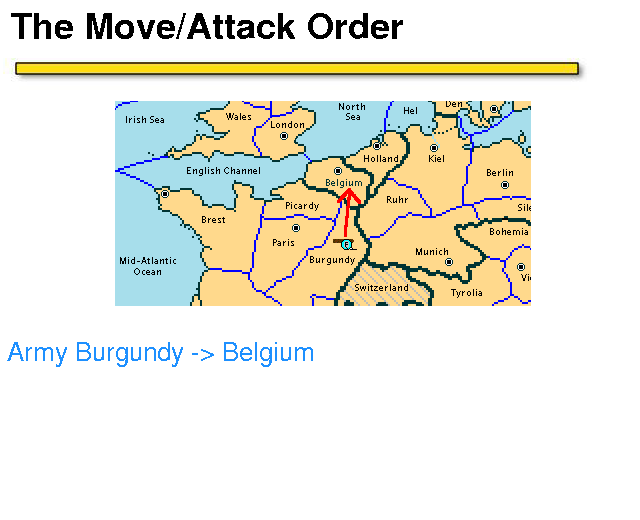
This work is licensed under a Creative Commons License.
Copyright (c)2002 Ry4an Brase

Move and attack are the same order. If the destination province is vacant you're moving; if it's occupied you're attacking it. A unit may move to any adjacent province so long as it can exist in that sort of terrain. An army may not move into the sea, and a fleet may not move to a non-coastal land province.
Three coastal provinces on the board have a special feature -- multiple coasts. These three are St. Petersburg, Bulgaria, and Spain. When a fleet moves into one of these provinces it may only move to the coasts that are adjacent from the province from which the fleet came. Looking at the board will show that a fleet in the Barrents Sea could move to the north coast of St. Petersburg, but not the the south coast. A fleet in the Mid-Atlantic Ocean could move to either the north or south coast of Spain, and it must specify which. Armies ignore coast distinctions entirely.
Two other coastal provinces have a special marshy quality:
Constantinople and Denmark. A look at these provinces shows that they
consitute land bridges that if given coasts would prevent fleet movement into
the Black Sea and the Baltic Sea, respectively. To prevent this they are
assumed to have waterways such that fleets may enter the provinces from one side
and may (on a subsequent turn) exit on the other side. Thus a fleet may move
from the North Sea to Denmark on one turn and may then move from Denmark to the
Baltic Sea on the next turn. Armies may enter these two provinces (and walk
across them) as if they were any other coastal provinces.

This work is licensed under a
Creative Commons License.
Copyright (c)2002 Ry4an Brase